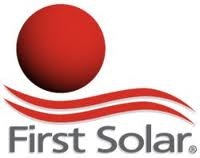Nuclear power has been a hot political issue for a few decades now. The energy source is relatively abundant and clean burning, something most consumers should love at a time when emissions and energy scarcity are so important.
But after the Fuskushima disaster in Japan two years ago the industry’s momentum has been slowed to say the least. Earlier this week, fellow Fool Maxx Chatsko posted an article with facts meant to demystify nuclear energy. Some of the items were interesting, like the density of nuclear energy, but it glossed over five items that will doom nuclear power in the long term.

There’s a reason natural gas, wind, and solar power are now the most popular new power generation assets in the U.S. — they’re cost effective. One thing that nuclear advocates never fully discuss is the cost of a nuclear plant or how much the power coming out of it will cost.
Let’s take a look at one plant going through the approval process in Florida — Progress Energy, Inc. (NYSE:PGN)‘s 1.1 GW Levy County nuclear project.
The Levy County project was originally supposed to cost $5 billion to build and be operational by 2016. Today, estimates by the company itself put project costs at $19 billion-$24 billion and operation by 2024 at best. What does that mean to ratepayers (before added costs that I’ll get to in a minute)?
At a nuclear plant there is a large capital expense and then ongoing costs for fuel, maintenance, etc. Let’s just look at the capital expense of $24 billion (these projects are never under budget).
If the nuclear plant were to be finished, the depreciation alone over 30 years would be $0.083 per kW-hr. That’s assuming the plant would never shut down and doesn’t include maintenance cost, profit, no interest cost, or fuel. Adding these costs would bring it closer to $0.20 per kW-hr, which brings me to…
The California Energy Commission did a study in 2011 that determined nuclear power would cost between $0.17 and $0.34 per kW-hr. That’s nowhere near competitive with natural gas, wind, or solar.
By comparison, First Solar, Inc. (NASDAQ:FSLR) is building a plant in New Mexico that will be open 2014 and will cost ratepayers $0.0579 per kW-hr. Nuclear power is simply too expensive.
Government subsidies save nuclear power from extinction
If you think government subsidies are bad in wind or solar you haven’t seen anything yet. The government explicitly limits the liability nuclear power plant owners have, which is the only way any nuclear plant is ever built. Without limited liability insurers wouldn’t touch solar and investors wouldn’t give the funding companies need.
Then there’s the completely abhorrent act of using Construction Work in Progress, or CWIP, to build plants. This allows utilities to charge customers for a plant as it’s being built. If the project stalls or costs go up it isn’t the utility that is on the hook, it’s ratepayers. In Georgia, The Southern Company (NYSE:SO) subsidiary Georgia Power used CWIP to begin construction on its new Vogtle nuclear plant expansion, a plant that has become so expensive it should be dead in its tracks. Ratepayers are already paying $44 per year for the project that needed an $8.3 billion government guarantee and by 2018 that will balloon to $164 per year.





